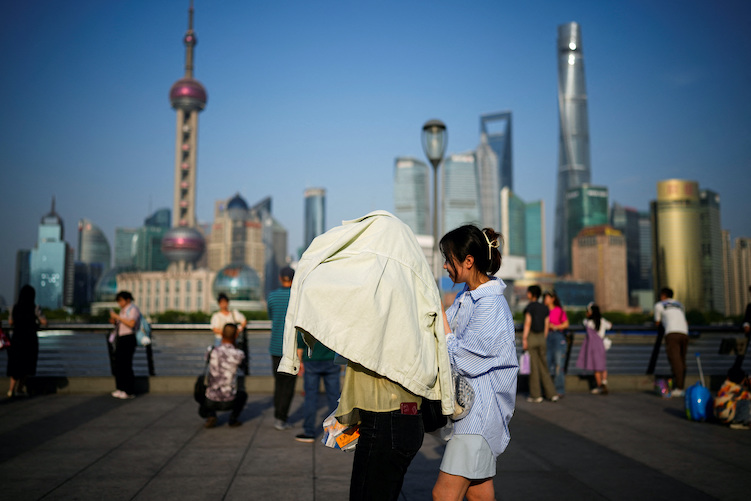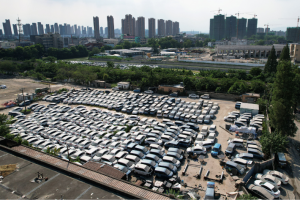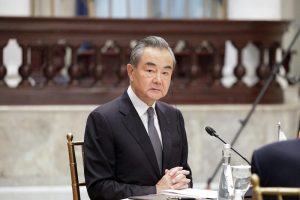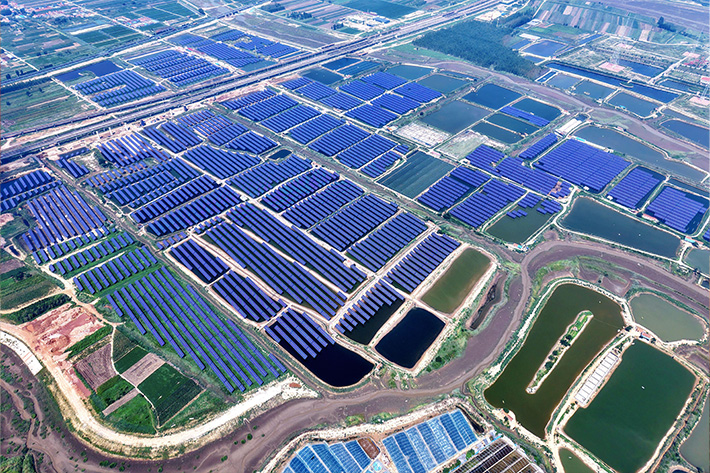More Asian states were hit by extreme temperatures in May, which broke records and raised doubt on nations ability to adapt to the climate crisis.
Temperatures soared again in China, Vietnam and Thailand in recent days after heatwaves struck large parts of the continent in April.
Shanghai endured its hottest May day in more than a century on Monday, notching 36.1 degrees Celsius, while Shenzhen, the southeastern tech hub, set a record of 40.2C on Tuesday. The heatwave is set to continue across the south for a few more days.
“I’m not surprised that they are occurring, and not surprised that they are worse. But how they are occurring, it’s just been week on week on week of these records being shattered,” Sarah Perkins-Kirkpatrick, a climate scientist with the University of New South Wales in Sydney, said. “It’s just relentless.”
ALSO SEE:
US to Target Investment in China Chips, AI, Quantum Computing
Southern China sees surge in power demand
Demand for electricity in China’s southern manufacturing hubs, including Guangdong, has surged in recent days, with China Southern Power Grid, one of the country’s two grid operators, seeing peak power load exceeding 200 million kilowatts – weeks earlier than normal and close to historic highs.
In recent days, the power load in Hainan rose above 7 million kW for the first time, and also hit record highs in Guangxi, according to state media reports, with further rises expected in other southern provinces such as Yunnan and Guizhou in coming days.
Mei, owner of a massage parlour in Shenzhen, lamented that she was already having to turn on the air-conditioning.
“Normally it gets hot gradually in June, but this year has been really sudden,” she said, declining to give her full name. “It’s around 1,000 yuan ($145) a month to run, but customers need it.”
Nationwide temperatures this month will about the same as a year earlier, but parts of the Yangtze delta, such as Shanghai, and the southwest, such as Sichuan and Yunnan, temperatures will be 1-2 degrees higher, Gao Rong, deputy director of the National Climate Centre, told a press conference on Friday.
Powerful convection weather has also wreaked havoc in central China in recent weeks, with protracted downpours and even hail devastating the country’s ongoing wheat harvest. In Henan province, known as the granary of China, moderate to heavy rains are expected to continue till at least Sunday (June 4).
Fears over high power consumption in Vietnam
The heatwave in Vietnam, expected to last well into June, has already forced the authorities to turn off street lights and ration electricity, as air-conditioning demand threatened to overwhelm the power grid.
The country recorded its highest temperature ever on May 6, at 44.1C in Thanh Hoa province, about 150km south of Hanoi. Another province came close to the record on Wednesday, hitting 43.3C.
Vietnam’s national weather forecaster warned on Thursday of residential fire risks due to high power consumption. With temperatures set to range from 35 to 39 degrees Celsius in the coming days, it also warned of the risks of dehydration, exhaustion and heat strokes.
Seasonal temperature records also continued to tumble through May, with steamy Singapore at its hottest for the month in 40 years.
Health protocols to manage extreme heat
The current temperatures follows a punishing heatwave that swept across India, Pakistan and Southeast Asia in April, causing widespread infrastructure damage and a surge in heatstroke cases.
Bangladesh was also at its hottest in 50 years, while Thailand hit a record 45C.
The April heatwave was “30 times more likely” because of climate change, a team of climate researchers said in May, and the current temperature spike “is likely to be caused by the same factors”, said Professor Chaya Vaddhanaphuti from Thailand’s Chiang Mai University, who was part of the team.
India and other countries have established protocols to deal with the health risks arising from extreme heat, opening up public “cool rooms” and imposing restrictions on outdoor work, but Prof Vaddhanaphuti said governments need to plan better, especially to protect more vulnerable communities.
Researchers from the University of Bristol warned in a paper published in April that regions with little prior experience of extreme heat could be most at risk, identifying eastern Russia, as well as the Chinese capital Beijing and surrounding districts, among the more vulnerable.
But for countries like India, where humidity is already pushing “wet bulb” temperatures to unsafe levels, preparing for the worst might not be enough, said Dr Vikki Thompson, the paper’s lead author.
“At some point we get to the limit of humans actually being able to cope with the temperatures,” she said. “There could be a point where nobody could cope with them.”
As many as 2 billion people will be exposed to dangerous heat if the world remains on its current track to rise an average 2.7 degrees Celsius this century, with India likely to be the worst-hit, scientists warned in another study published last week.
- Reuters with additional editing by Jim Pollard
NOTE: Further text was added to this report, with minor edits on June 2, 2023.
ALSO SEE:
China Set to Install 100 GW of Solar Power This Year – PV Mag
China ‘Needs to Fix its Electricity Grid, Not More Coal Power’
Deaths, Health Crisis as Severe Heatwave Rocks Asia – Guardian
Critical China Factory Hubs Face Greatest Climate Change Risk
























